Odessa, TX Pollen and Allergy Report for Summer 2023
Pollen Allergy Trends in Odessa, TX
When is pollen lowest in Odessa, TX?

February
Lowest month total PPM
Avg. PPM
When is pollen highest in Odessa, TX?

March
Highest month total PPM
Avg. PPM
How does pollen in Odessa, TX compare to Texas?
Odessa has a lower average PPM than the state of Texas.
Odessa yearly avg PPM:
Texas yearly avg PPM:
How does pollen in Odessa, TX compare to the USA?
Odessa has a lower average PPM than the USA.
Odessa yearly avg PPM:
USA yearly avg PPM:
Is pollen worse this year in Odessa, TX?
Spring 2023 was worse than spring 2022.
Spring 2023 PPM:
Spring 2022 PPM:
Average PPM in Odessa, TX
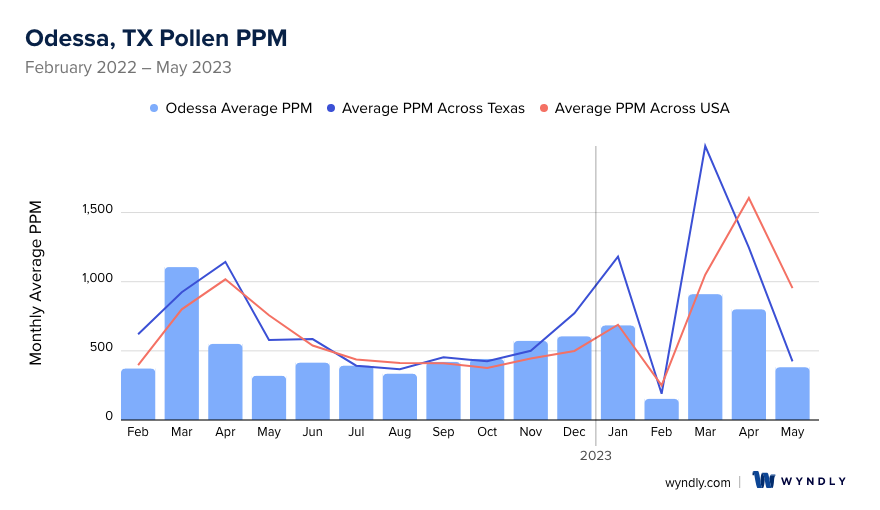
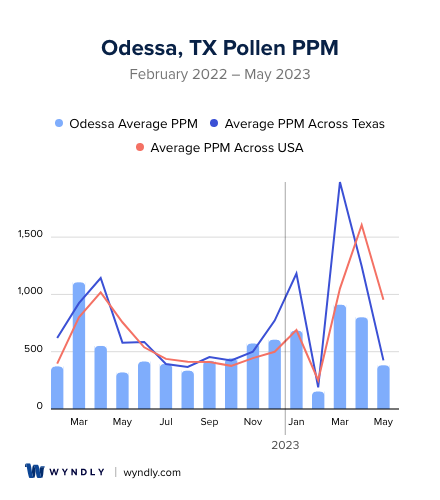
Odessa, TX Pollen and Allergy Breakdown by Month
Grass
When is grass pollen highest in Odessa, TX?
May has the highest grass pollen in Odessa, TX with an average PPM of
When is grass pollen lowest in Odessa, TX?
April has the lowest grass pollen in Odessa, TX with an average PPM of
Tree
When is tree pollen highest in Odessa, TX?
March has the highest tree pollen in Odessa, TX with an average PPM of
When is tree pollen lowest in Odessa, TX?
July has the lowest tree pollen in Odessa, TX with an average PPM of
Weed
When is weed pollen highest in Odessa, TX?
December has the highest weed pollen in Odessa, TX with an average PPM of
When is weed pollen lowest in Odessa, TX?
February has the lowest weed pollen in Odessa, TX with an average PPM of
Odessa, TX Pollen Monthly Breakdown by Pollen Type
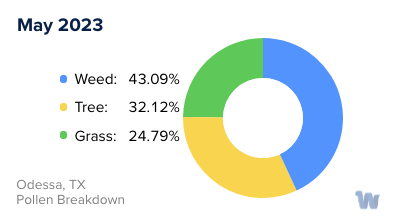
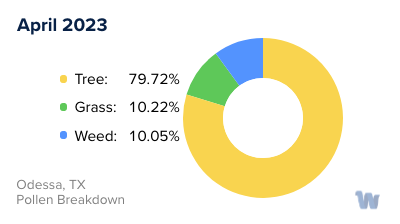
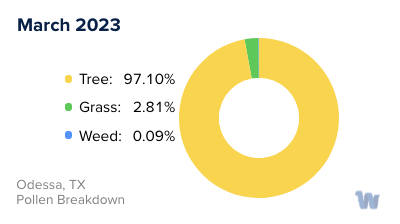
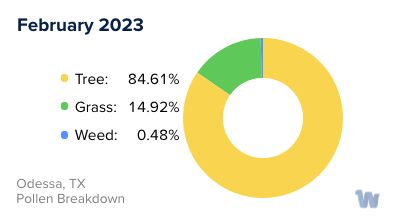
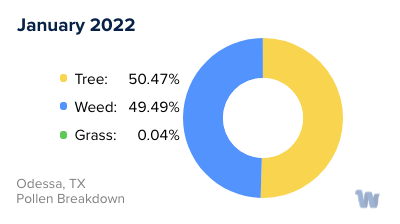
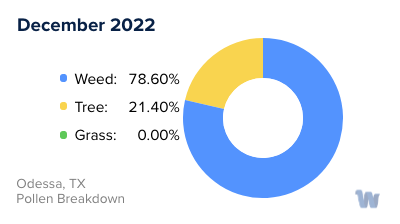
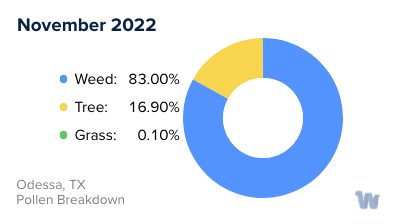
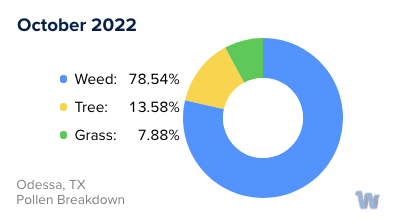
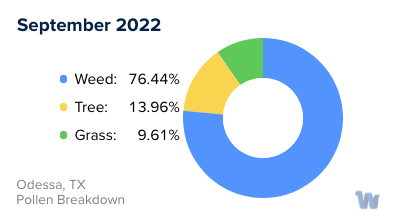
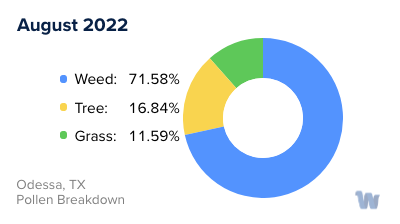
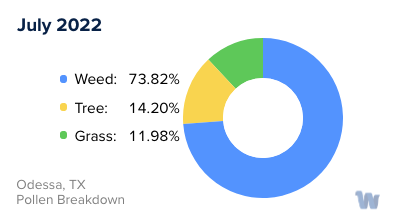
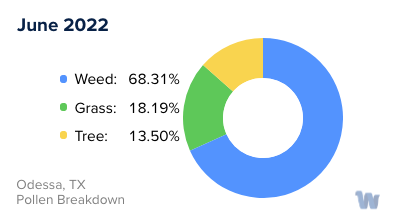
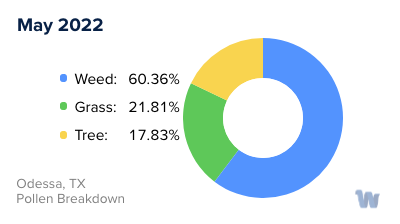
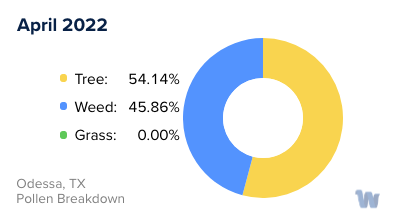
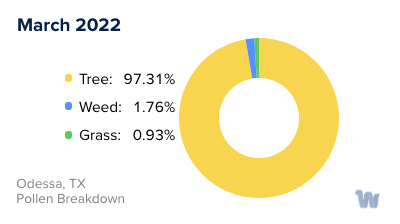
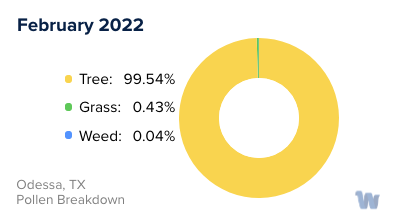
Pollen and Hay Fever in Odessa, TX
Living in the sunny city of Odessa, Texas, means getting to enjoy its warm weather and vibrant outdoors. However, it also means that residents may have to contend with pollen allergies, commonly known as hay fever, especially during certain times of the year.
Pollen allergies occur when our immune system overreacts to pollen, a fine powder produced by trees, grasses, and weeds. In Odessa, the primary sources of pollen are trees such as oak, cedar, and pine, grasses like Bermuda grass and Timothy grass, and a variety of weeds including ragweed.
Spring, particularly from March to June, is when tree pollen levels are at their peak in Odessa. If your allergies seem to worsen as the city begins to bloom, trees could likely be the culprits. Oak and cedar are most prevalent in this season, their pollen carried by the wind and inhaled into our respiratory systems.
Grass pollen, on the other hand, tends to be highest in late spring and early summer. The lush lawns and sports fields that come alive in Odessa during these months can be problematic for those sensitive to grass pollens, such as that from Bermuda and Timothy grass.
As summer gives way to fall, the main concern for allergy sufferers shifts from trees and grasses to weeds. Ragweed is infamous in the allergy world, as it releases its pollen in late summer and fall. This weed's pollen is extremely light and can travel great distances on the wind, affecting many people.
Pollen counts also tend to be higher on dry, windy days and lower after a heavy rainfall, as rain can help wash the pollen away. So, in the drier climate of Odessa, pollen allergies can be a significant issue for many residents.
Understanding the types of pollen and their seasons in Odessa can help you anticipate when your allergies might flare up, allowing you to better plan your outdoor activities and maintain a higher quality of life, even during high pollen seasons.


